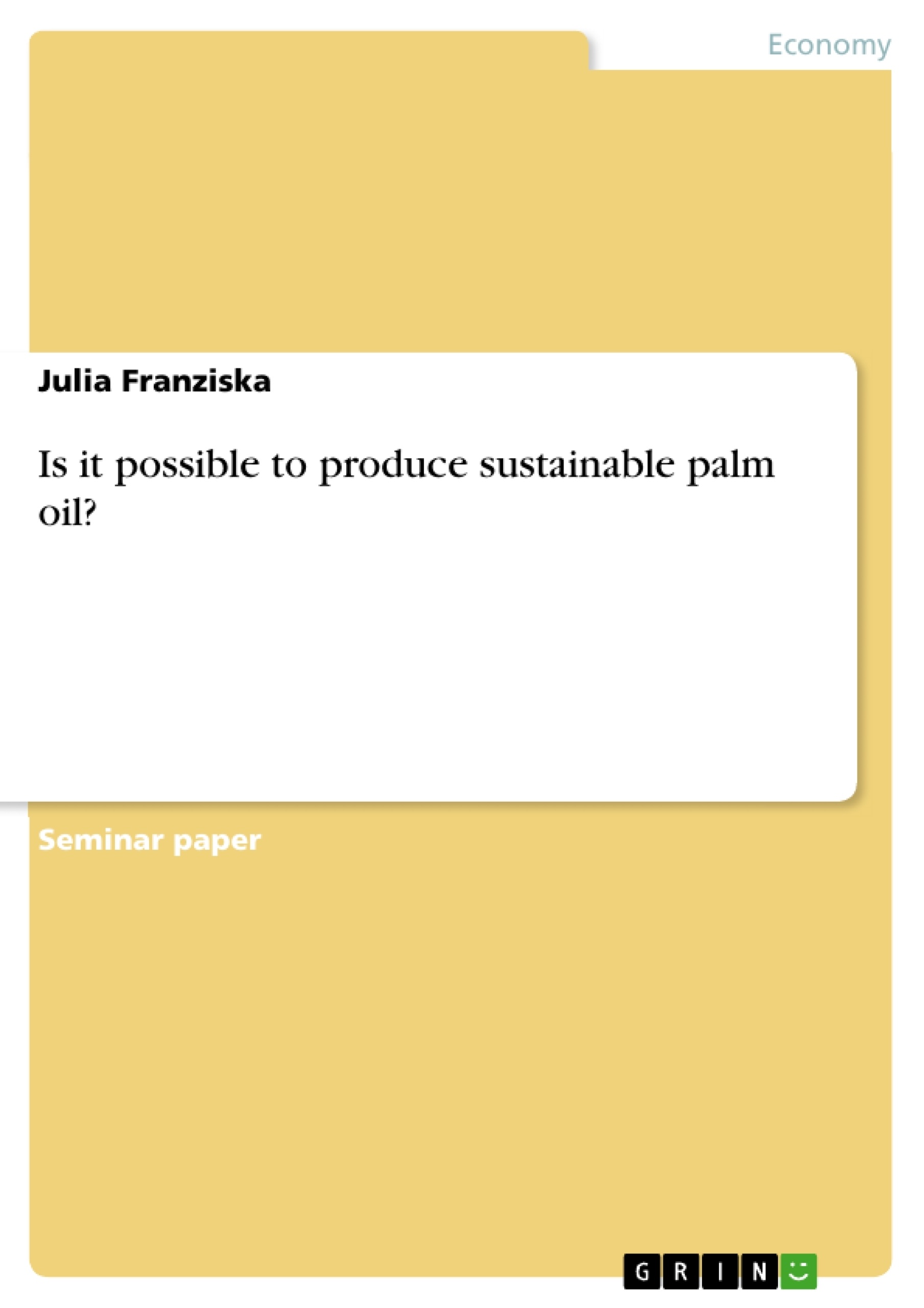Palm oil is a multiplayer, functioning as an ingredient in our everyday food, as an essential ingredient in our cosmetic products and as an energy supplier. We use it on a daily basis, while brushing our teeth with the “Colgate” toothpaste after we ate “Nutella” on toast. After we filled our diesel car with palm oil biodiesel, we probably wash our hands with a “Dr. Bronner’s Magic Soap”. In all these products, palm oil is the fundamental ingredient. But where does it come from and how can we identify the problems that occur within the palm oil production?
The edible oil seems to be promising, but in fact causes deforestation, carbon dioxide emissions and the loss of biodiversity. The industries, as well as the end consumers are not aware or do not want to be aware of the fact, that the climate is changing and one essential reason for that is the irresponsible production of palm oil.
With the help of organizations like “Greenpeace” and “Amnesty International”, it is possible to find out what consequences palm oil production already has. According to Greenpeace UK “An area the size of a football pitch is torn down in Indonesia’s rainforest every 25 seconds, with palm oil driving the destruction.” (Nicholls). This leads to my research question: Is it possible to produce sustainable palm oil?
In order to answer my research question, I want to connect its history, as well as the biological process onto the consequences palm oil production already has. Within my essay I will focus on the business and usage of palm oil, showing its unique variety. With the help of examples of different companies, which use palm oil as an ingredient for their products, one has the possibility to form his own opinion on the aspects of sustainability within the palm oil sector.
My goal is to raise awareness of the use of palm oil products and to eliminate preconceptions according the palm oil industry in general.
Inhaltsverzeichnis (Table of Contents)
- Introduction
- Historical Background
- Africa
- Asia
- Process
- Business
- Supply (Value) Chain
- Companies
- Smallholders
- Insetting
- Certifications
- Usage
- Cosmetics
- Dr. Bronner's and L'Oréal
- Food
- Ferrero and Mars Inc.
- Energy
- Cosmetics
- Risks
- Health Risks
- Consequences
- Rainforest Destruction
- Human Rights Challenges
- Conclusion
Zielsetzung und Themenschwerpunkte (Objectives and Key Themes)
This essay explores the question of whether sustainable palm oil production is possible. It delves into the history of palm oil production, examines the biological process involved, and analyzes the consequences of its production. The essay focuses on the business and usage of palm oil, highlighting its varied applications and the potential for sustainability within the sector. The main objective is to raise awareness about palm oil products and challenge preconceived notions about the industry.
- The history of palm oil production and its associated controversies.
- The impact of palm oil production on the environment and biodiversity.
- The business aspects of palm oil production, including supply chains and company practices.
- The various uses of palm oil across different industries.
- The possibilities and challenges of achieving sustainable palm oil production.
Zusammenfassung der Kapitel (Chapter Summaries)
The introduction sets the stage by outlining the widespread use of palm oil in everyday products and highlighting the environmental and social concerns associated with its production. The research question "Is it possible to produce sustainable palm oil?" is introduced, along with the essay's goals and focus. The historical background explores the origins of palm oil production in Africa, tracing its evolution from a local food source to a major commodity in the global economy. The chapter examines the role of palm oil in the Atlantic slave trade and the subsequent rise of a European-dominated export industry.
Schlüsselwörter (Keywords)
This essay explores the complex issues surrounding palm oil production, focusing on its history, process, business aspects, usage, risks, and consequences. Key themes include sustainability, deforestation, carbon emissions, biodiversity loss, human rights, and the role of companies, smallholders, and certification schemes. The analysis draws on various sources, including academic research, reports from organizations like Greenpeace and Amnesty International, and company information.
- Arbeit zitieren
- Julia Franziska (Autor:in), 2019, Is it possible to produce sustainable palm oil?, München, GRIN Verlag, https://www.grin.com/document/464281



